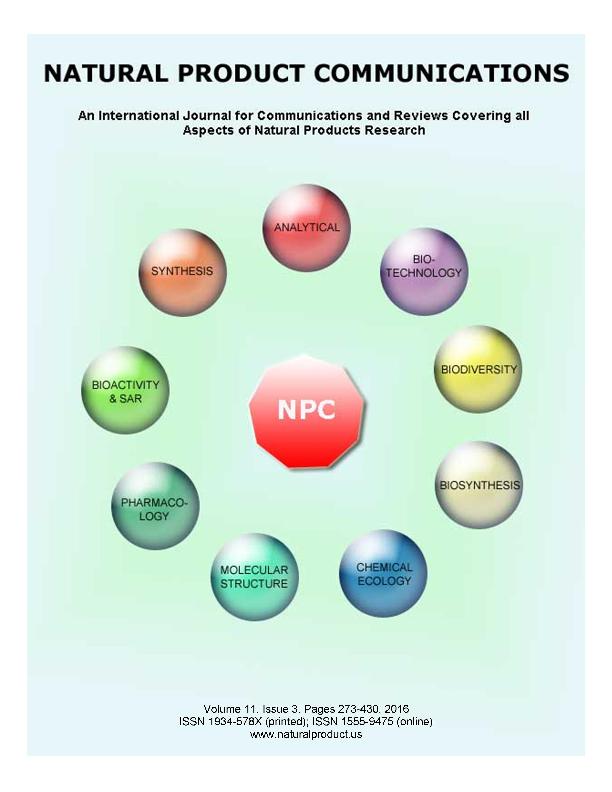Artículo
Cytotoxic Compounds from Aerial Organs of Xanthium strumarium
Piloto Ferrer, Janet; Zampini, Iris Catiana ; Cuello, Ana Soledad
; Cuello, Ana Soledad ; Marbelis, Francisco; Romero, Aylema; Valdivia, Dayana; González, María; Salas, Carlos; Sanchez Lamar, Ángel; Isla, Maria Ines
; Marbelis, Francisco; Romero, Aylema; Valdivia, Dayana; González, María; Salas, Carlos; Sanchez Lamar, Ángel; Isla, Maria Ines
 ; Cuello, Ana Soledad
; Cuello, Ana Soledad ; Marbelis, Francisco; Romero, Aylema; Valdivia, Dayana; González, María; Salas, Carlos; Sanchez Lamar, Ángel; Isla, Maria Ines
; Marbelis, Francisco; Romero, Aylema; Valdivia, Dayana; González, María; Salas, Carlos; Sanchez Lamar, Ángel; Isla, Maria Ines
Fecha de publicación:
02/2016
Editorial:
Natural Products
Revista:
Natural Product Communications
ISSN:
1934-578X
e-ISSN:
1555-9475
Idioma:
Inglés
Tipo de recurso:
Artículo publicado
Clasificación temática:
Resumen
Xanthium strumarium L., the main species of the genus Xanthium, is ubiquitously distributed. The aim of this study was to determine the cytotoxic effect of aerial organs of X. strumarium, grown in Cuba, against cancer cell lines and the isolation of compounds potentially responsible for this activity. Initially, an ethanol partitioning procedure yielded the XSE extract that was subsequently fractionated with chloroform resulting in a XSCF fraction. Both, XSE and XSCF fractions exhibited cytotoxic effects on MDA MB-231, MCF7, A549 and CT26 cell lines by using the MTT assay. Above all, the XSCF fraction was more active than XSE. For this reason, XSCF was subsequently fractionated by silica gel chromatography and the active fractions submitted to semi-preparative HPLC for isolation of bioactive compounds. Six sub-fractions (SF1 to SF6) were recovered. Sub-fractions 3 and 6 were the most active on each assayed cell line, while sub-fractions 4 and 5 were only active against A549 and CT26 cell lines. In each case, sub-fraction 6 showed the strongest inhibitory effect. The HPLC-DAD fingerprint of sub-fraction 6 showed a single peak that was identified by GC-MS as (-) spathulenol, a sesquiterpene with reported antitumor activity.
Palabras clave:
Toxicity
,
Xanthium
,
Cuba
,
Citotoxicity
Archivos asociados
Licencia
Identificadores
Colecciones
Articulos(INQUINOA)
Articulos de INST.DE QUIMICA DEL NOROESTE
Articulos de INST.DE QUIMICA DEL NOROESTE
Citación
Piloto Ferrer, Janet; Zampini, Iris Catiana; Cuello, Ana Soledad; Marbelis, Francisco; Romero, Aylema; et al.; Cytotoxic Compounds from Aerial Organs of Xanthium strumarium; Natural Products; Natural Product Communications; 11; 3; 2-2016; 371-374
Compartir



